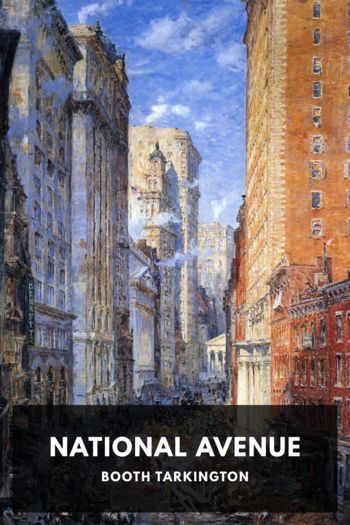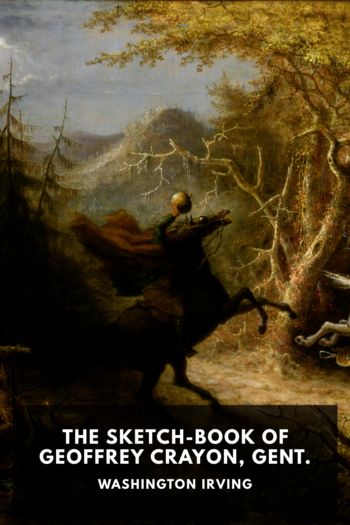Enchanted Evenings:The Broadway Musical from 'Show Boat' to Sondheim and Lloyd Webber by Block, Geoffrey (good story books to read .TXT) 📕

Read free book «Enchanted Evenings:The Broadway Musical from 'Show Boat' to Sondheim and Lloyd Webber by Block, Geoffrey (good story books to read .TXT) 📕» - read online or download for free at americanlibrarybooks.com
Read book online «Enchanted Evenings:The Broadway Musical from 'Show Boat' to Sondheim and Lloyd Webber by Block, Geoffrey (good story books to read .TXT) 📕». Author - Block, Geoffrey
Two important books on European opera have influenced the ensuing discussion of American musicals and merit special mention and gratitude here: Joseph Kerman’s Opera as Drama and Paul Robinson’s Opera & Ideas.8 Kerman’s unflinching insistence on music’s primary role in defining character, generating action, and establishing atmosphere results in a somewhat sparse assemblage of canonic masterpieces. However, his brilliant overview of opera with its powerful guiding principle, “the dramatist is the composer,” can be fruitfully applied to Broadway, even to those works that resolutely reject Kerman’s model of a major operatic musical masterpiece. Robinson’s accessible yet subtle survey of six operas (one each by Mozart, Rossini, Berlioz, Verdi, Wagner, and Strauss) and of dramatic meaning in the two Schubert song cycles offers imaginative and convincing insights on the power of texted music to express emotional and intellectual nuance. Both studies display a standard of excellence that might serve and inspire nearly any serious study of dramatic music, including the Broadway musical.
A third book on opera, Peter Kivy’s Osmin’s Rage, supplies valuable philosophical underpinning for a discussion on music and text.9 Kivy’s distinctions between the opposite principles of “textual realism” (music that “sets meanings, not words”) and “opulent adornment” (music that “sets words, not meanings”) are particularly helpful. The tensions between these two principles are embodied in the “song and dance” musicals (composed mainly but by no means exclusively in the 1920s and ’30s) that feature “opulent adornment,” and the so-called integrated musicals, the Rodgers and Hammerstein models of “textual realism” that gained commercial success, critical stature, and cultural hegemony beginning in the 1940s.
In the recent past intense ideological differences have been solidified. In one camp are those who argue that musicals are at their best when fully integrated and aspiring toward nineteenth-century European tragic opera; in another are those who relish nonintegrated and nonoperatic musical comedies. The contrasting perspectives of Swain and Banfield offer strong advocates for each side. Swain, who claims to disparage the taxonomic differences between opera and Broadway shows, nonetheless invariably places the latter, especially musicals that eschew their tragic potential, on a lower echelon. Thus for Swain, “though a number of its best plots have offered opportunities for tragic composition,” the Broadway musical provides a litany of “missed chances and unanswered challenges.”10 Even West Side Story, the only musical that Swain unhesitatingly designates a masterpiece (in part because a central character achieves the heights of tragedy when he dies singing), falls short of operatic tragedy when Maria speaks rather than sings her response to the death of her beloved Tony.
Banfield, sympathetic to a subject (Sondheim) who is rarely “trying to challenge opera on its own territory,” argues that in musicals, in contrast to operas that are through-sung, music “can often not just move in and out of the drama but in and out of itself, and is more dramatically agile … than in most opera.”11 For Banfield, West Side Story keeps faith with Bernstein’s desire to avoid “falling into the ‘operatic trap,’” and Maria’s final speech works perfectly.12
Among other juicy bones of contention are the conflicts between popularity and critical acclaim, authenticity and accessibility, opulent adornment and textual realism, artistic autonomy and social and political contextuality, and nonintegrated versus integrated musical ideals. This preface has introduced some of these issues and critical quagmires that will be reintroduced in chapter 1 and developed in subsequent chapters. Neutrality is neither always possible nor always desirable to achieve, especially on the subject of critical relationships between music and text and music and drama. My general intent, however, is to articulate the merits as well as the flaws of opposing arguments. In the court of free intellectual inquiry, more frequently than not, at least two sides are competent to withstand scrutiny and trial.
Tacoma, Wash.
G. B.
January 1997
A NEW PREFACE
Broadway’s “Golden Age”
Still popular with audiences young and old, the musicals explored in Enchanted Evenings have not vanished from our stages or our consciousness. In fact, the situation is just the reverse. Judging by the frequency and perennial popularity of revivals (the practice of restaging favorite musicals from the past) and the competitiveness of the revival category at the annual Tony Awards (Broadway’s Oscars), the Broadway musical has evolved into one of America’s greatest and most distinctive cultural institutions as well as an opportunity for new work. Increasingly, classic musicals have received serious critical scrutiny by directors with wide-ranging visions, and audiences from all over the world flock to see and experience this unique American (and sometimes British) contribution to popular culture. If there is a Broadway Museum, and I think there is, the musicals you will read about in Enchanted Evenings occupy a major wing. In fact, in the years immediately prior to, during, and since the period I wrote Enchanted Evenings all of the shows I discussed continued to receive attention in high-profile revivals, the vast majority on Broadway as well as elsewhere. In addition, revival recordings and reissues with new and original casts or other recordings in meticulous scholarly reconstructions for some of the older models were also made for most of these shows.
Here are some highlights of the stage resurrections since 1980 of shows featured in the first edition of Enchanted Evenings arranged chronologically by show. No show from this edition is absent from the list.1
• Show Boat: The acclaimed (and controversial) Broadway revival staged by Harold Prince (1994)
• Anything Goes: Broadway revival at the Vivian Beaumont (1987); London revival (1989); Royal National Theatre revival in London (2003); London revival (2005)
• Porgy and Bess: Glyndebourne Opera staged by Trevor Nunn (1986); New York City Opera (2000 and 2002); Los Angeles Opera (2007)
• The Cradle Will Rock: Off-Broadway production





Comments (0)